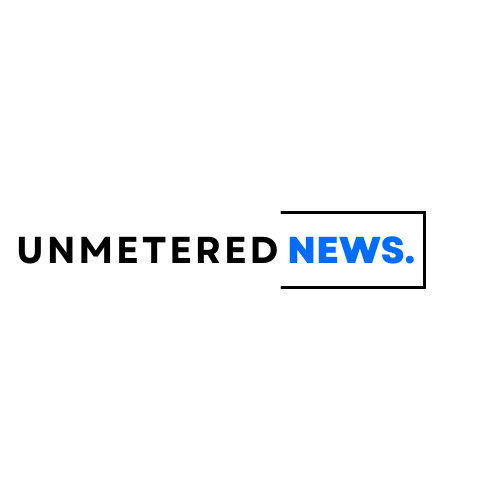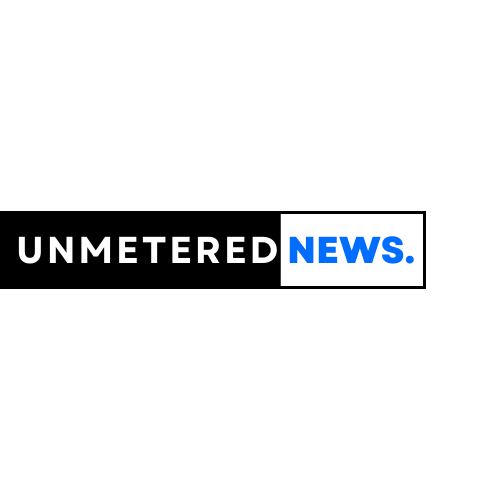- Home
- Advertise With us
- World News
- Tech
- Entertainment
- Travels & Tours
- Contact US
- About us
- Privacy Policy
Top Insights
Why Iran’s Nuclear Program Cannot Be Dismantled from the Air

OPINION — As Israel launches one of the most expansive covert-kinetic operations in recent memory against Iranian nuclear infrastructure, a critical question returns: can airpower—supported by advanced ISR, precision-guided munitions, and even U.S. bunker-busting weapons—permanently dismantle a hardened and decentralized nuclear program? The answer is no. That remains true even if the United States committed its full arsenal of deep-penetration munitions and stealth aircraft. Iran’s nuclear system is built not just to resist physical strikes, but to survive them—strategically, legally, and doctrinally.
Start with Fordow, Iran’s most fortified enrichment site. It sits buried 80 to 90 meters deep inside the Kuh-e Daryacheh mountains. The U.S. GBU-57A/B Massive Ordnance Penetrator can pierce up to 60 meters of reinforced concrete under ideal conditions—but it’s not designed to penetrate layers of deep mountain rock, which scatter blast effects and reduce impact. Even when a bomb penetrates, it’s impossible to confirm the destruction of IR-6 centrifuge arrays or determine the fate of enriched uranium. Destroying a building is not the same as eliminating the capacity for breakout.
Natanz, the better-known site, poses different problems. Its facilities are more exposed but have already shown resilience. The 2009–2010 Stuxnet attack disrupted rotor speeds; in 2021, a power grid attack shut down cascades. Both efforts avoided explosive sabotage to prevent aerosolizing stored uranium. Strikes on cascade halls or storage vaults could trigger exactly that outcome. Meanwhile, Iran was building new, deeper cascade chambers at Natanz—modeled after Fordow’s hardened design.
But these tactical concerns are just the surface. Since at least 2003, Iran has transformed its nuclear program into a compartmentalized, redundant network. The Atomic Energy Organization of Iran (AEOI) oversees public-facing sites, while critical R&D, procurement, and materials engineering are embedded across the Ministry of Defense, the military-linked SPND, and IRGC-run logistics and engineering firms. Universities like Malek Ashtar, Sharif, and Shahid Beheshti—sanctioned for proliferation-related research—support advanced work on centrifuge rotors, uranium metallurgy, and simulation models. The fuel cycle is spread across multiple cities: conversion at Isfahan, enrichment at Fordow and Natanz, heavy water production at Arak. Knock out one node, and others remain. This system wasn’t built just to function—it was built to survive.
The IRGC’s Passive Defense Organization has guided this shift since the early 2010s, hardening and camouflaging sites, moving assets underground, and routing logistics through civilian infrastructure. Its approach echoes Soviet and North Korean doctrine: survive the first strike, reconstitute after. Dual-use facilities, buried nodes, and mobile corridors form a system designed not to prevent attack, but to absorb it.
A turning point in this evolution was Iran’s move to fully domestic centrifuge production. Before, Iran relied on illicit procurement networks for sensitive components like rotors and bellows. Now it manufactures them using its own aerospace and metallurgical sectors. This change has rendered traditional interdiction strategies obsolete. There are no longer foreign supply chains to target. Disrupting production now means striking sovereign industrial plants not legally defined as nuclear sites—raising major questions under international law about proportionality, attribution, and escalation.
Since Friday, Israel has reportedly killed 14 Iranian nuclear scientists. But the strategic impact will be limited. These personnel were part of a deep and compartmentalized labor structure that includes rotor fabrication teams, enrichment system modelers, and logistics engineers—many of whom remain untouched. Iran’s nuclear knowledge is archived, teachable, and distributed through classified academic programs and military-run technical institutes. Continuity does not depend on who is killed—it depends on what survives.
Even if a strike damages facilities, it won’t provide strategic certainty. Since Iran ended its implementation of the JCPOA’s Additional Protocol in 2021, the IAEA has lost continuous access to surveillance footage and no longer has what Director General Rafael Grossi calls “continuity of knowledge.” When inspectors visited the Turquzabad warehouse in 2018—after its exposure by Israeli intelligence—they found undeclared nuclear material. That remains the only site revealed, but others may exist. And while Iran’s enrichment levels now far exceed JCPOA limits—the IAEA reports that Iran holds over 120 kilograms of uranium enriched to 60% U-235, just one step below weapons-grade—its activities technically remain within the bounds of the Nuclear Non-Proliferation Treaty (NPT), which allows enrichment of any level as long as it’s not diverted to weapons use. Iran’s uranium metal work at Esfahan, for example, is ostensibly for reactor fuel but has clear relevance for building warhead cores. Enrichment cascades, uranium conversion, and simulation software all remain dual-use by design. A bombing campaign can eliminate equipment, but not the legal narrative, institutional structure, or strategic doctrine that sustain the program.
The weaponization side is even harder to target. A nuclear device requires more than enriched uranium—it also needs implosion systems, neutron initiators, hydrodynamic tests, and precision detonators. According to the IAEA’s 2011 annex and the Institute for Science and International Security reports from 2019 to 2020, based on documents from Iran’s nuclear archive , Iran has explored all of these. Testing at the Parchin military complex and archived core design files are part of the record. These assets are not only small and relocatable—they don’t even involve fissile material. They’re nearly impossible to detect by ISR, let alone destroy, and can only be verified through intrusive on-site inspections. Strategically, Iran is not racing to build a bomb. It is positioning itself just below the threshold—able to weaponize rapidly without openly violating the NPT. This posture, formalized by Mohsen Fakhrizadeh and internalized across SPND, maximizes leverage while minimizing legal risk. And it cannot be destroyed from the air.
Nor will a strike yield reliable post-strike clarity. Iran has invested in denial and deception: false facades, buried heat sources, multispectral camouflage, and encrypted site-to-site communications. These frustrate ISR and make battle damage assessments guesswork. The U.S. faced similar issues in Iraq from 1991 to 2003, where mobile infrastructure routinely eluded satellite and aerial surveillance. Iran’s situation is worse—because there’s no inspector access, and no ground-truthing. Damage can only be inferred from secondary signatures like heat plumes or seismic shockwaves, none of which guarantee success.
What Iran now possesses is structural latency. This is more than technical know-how—it’s the ability to reconstitute a nuclear program after large-scale physical degradation. Designs, enriched stockpiles, rotor manufacturing, conversion tools, simulation models, and trained scientists are spread across the Iranian state. These aren’t hidden threats. They are sovereign capabilities built into the system. The model is similar to Saddam Hussein’s “just-in-time” reconstitution strategy in the 1990s: Iraq had no bombs, but preserved enough design data and networks to restart under better conditions. Iran has deliberately adopted that same logic. As long as legal ambiguity is preserved, scientists remain protected, and facilities go uninspected, no strike can destroy the true core of the program.
Common analogies are misleading. Israel’s 1981 strike on Iraq’s Osirak reactor worked because the facility was pre-operational, had no uranium fuel, and no supporting infrastructure. There was no fuel cycle, no cascade system, and no redundancy. None of that applies to Iran. Today’s program is hardened, dispersed, and far closer to the nuclear threshold. Osirak is no longer a relevant model.
There’s also no historical precedent for dismantling a program as deeply embedded as Iran’s without physical access. Libya’s 2003 disarmament followed years of behind-the-scenes negotiations and was catalyzed not just by fear of invasion, but by Gaddafi’s desire to normalize relations with Western banks and oil markets. Libya never enriched uranium domestically; its centrifuges were still in crates, acquired through the A.Q. Khan network, and its warhead designs were copies of Pakistani blueprints. South Africa, by contrast, had built six nuclear weapons—but it dismantled them in secret between 1989 and 1991 under a tightly controlled domestic program, then revealed their existence only after apartheid’s end to facilitate international reintegration. The process was driven by regime transition, not external pressure, and was verified only after full IAEA access. Syria’s al-Kibar reactor, destroyed by Israel in 2007, was based on a North Korean gas-graphite design and had no support infrastructure: no enrichment, no reprocessing, and no declared energy program to obscure it. No bombing campaign can replicate the political and technical conditions that enabled disarmament in those cases.
A truly effective dismantlement would resemble not strikes, but a ground incursion. It would involve seizing Fordow and Natanz, securing uranium stockpiles, capturing cascade schematics and procurement records, and either debriefing or removing scientists tied to the IRGC, AEOI, and university research programs. It would require IAEA and intelligence personnel embedded on-site, conducting forensic audits in centrifuge labs, metallurgy workshops, and simulation centers. This is what worked in Iraq and Libya: control, not just precision. No air campaign can do that from 35,000 feet.
At best, the airstrikes will buy time. At worst, they will destroy inspection leverage, push the program further underground—both physically and politically—and risk triggering the very breakout they aim to prevent. They offer the appearance of resolution, not its substance. Denial, if it is to be real, must go beyond temporary disruption. It must mean verified removal of capacity, control of personnel, and physical access to infrastructure. The hard truth is this: if disarmament is the goal—as President Trump insists when he says Iran must never acquire a nuclear weapon—then airstrikes alone won’t achieve it.
The Cipher Brief is committed to publishing a range of perspectives on national security issues submitted by deeply experienced national security professionals.
Opinions expressed are those of the author and do not represent the views or opinions of The Cipher Brief.
Have a perspective to share based on your experience in the national security field? Send it to Editor@thecipherbrief.com for publication consideration.
Read more expert-driven national security insights, perspective and analysis in The Cipher Brief
Related Articles
The Global Mental Health Crisis Surges Amid $200 Billion Funding Gap
UNITED NATIONS, Jun 18 (IPS) – Although access to mental health and...
Israels Attack on Iran and Its Potential Fallout
NEW YORK, Jun 18 (IPS) – Dr. Alon Ben-Meir is a retired...
Ali Khamenei: Backed into a corner, Iran’s ruthless leader faces fight for survival
Over several decades in power, Iran’s Ayatollah Ali Khamenei has built up...






Leave a comment